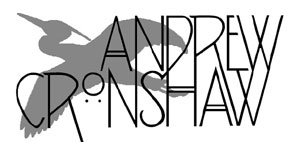
- Andrew Cronshaw website -
- Andrew Cronshaw MySpace -
- Cloud Valley Music website -
- Andrew Cronshaw website -
- Andrew Cronshaw MySpace -
- Back to Reviews Introduction page -
Written in
fRoots
issue 253, 2004
SUSANA SEIVANE
Mares De Tempo
Boa Colección Do Fol 35 (2004)
FAUSTINO SANTALICES
Gravacións Históricas de Zanfona 1927-1949
Boa Colección Do Fol 32 (2004)
Whereas the first Susana Seivane album had the gaiteira surrounded by a team of
musicians chosen for the recording, some of whom went on to constitute her live
band, most of this third album has a muscular live-band sound. With her gaitas
there’s the quintet of Xurxo Iglesias on bouzouki, Brais Maceiras on
trikitixa-influenced diatonic accordion, Iván Laxe’s electric bass, Carlos
Freire’s percussion and Teresa Sayas’ drumkit, with guests contributing flutes,
sax, violin, keyboards and touches of harp, trumpet and musical saw, with
Seivane often adding in her tambourine and other traditional percussion. The kit
drumming is hefty but well-integrated, and it’s snappy, agile stuff that, apart
from the overdubs, for the most part is pretty much the sort of thing they’d do
in their storming live show, even in one case including a scrub finish.
But between the instrumentals there’s the
blossoming of Seivane as a singer. There are five songs, including a big
arrangement featuring wind player Xavier Paxariño and massed vocals in a reprise
of the traditional Xota De Liñares, which was sung on the first Seivane
album by former band vocalist Sonia Lebedynski. There’s also a reworking of
Muiñeira De Alén from the second album. Berrogüetto singer Guadi Galego
wrote and co-sings Tempo De Pensar. The final track (apart from the nippy
“extra track” coda of a gaita and accordion duet) is Seivane’s setting of poet
Guillermo Diaz’s lyrics in Miña Virxe, Meu Amor to a big swung rock pulse
with soaring jazzy soprano sax. Her voice is strong, with the mature edge of
Galician women singers of the previous generation plus a modern awareness, and
it’s clear that now her singing and song-making have emerged they’re likely to
be a major aspect of her music from here on.
The DVD bulking up the CD’s packaging is a
disappointment, a ragbag, promo-like affair of snippets and aimless video-clips
with mostly unsynchronised overdubbed sound.
It’s good to see a record company giving archive
treasures the same high standard of packaging as it does to those by living,
young and one assumes bigger-selling artists. No DVD for Faustino Santalices -
he died in 1960 – but, like Seivane, he merits an up-market Digipak. Born in
Ourense province in 1877, he learned to play gaita, and indeed later wrote a
book about it, but it is for his work with the hurdy-gurdy - making, playing,
writing a book about and beginning the revival of the instrument, and using it
to accompany his singing - that he is best known.
His self-accompanied singing of two songs, and
his playing of gaita, in harmony with another gaita accompanied by bombo and
tamboril, was recorded for the Regal label in either – opinions differ - 1927 or
1929. In 1949 he went back into a studio to make recordings for release on
Columbia. All those recordings, totalling sixteen tracks, are gathered together
here, plus a processional march and alborada from the later session that were
unreleased until now. Just how rare these classic recordings had become is shown
by the fact that, while the instrumentals are largely familiar from the
performances of others throughout the century, some of the alalás, alboradas,
ballads and other songs in them are absent from the repertoires of today’s
revivalists.
Santalices’ singing has an infectious robust
strength and directness, his hurdy-gurdy playing is lively and articulate, and
the melodies and performances are fine and memorable. This is a great
opportunity to listen back through the years to a man who demonstrated the worth
of an instrument nearly extinct in his country and whose singing and playing is
right from the heart of Galician traditional music, past and present. These
recordings are as important to it as are the recordings of Joseph Taylor to
English music (and those latter are, as far as I know, shamefully unavailable on
CD).
© 2004
Andrew Cronshaw
You're welcome to quote from reviews on this site, but please credit the writer
and fRoots.
Links:
fRoots - The feature and
review-packed UK-based monthly world roots music magazine in which these reviews
were published, and by whose permission they're reproduced here.
It's not practical to give, and keep up to date,
current contact details and sales sources for all the artists and labels in
these reviews, but try Googling for them, and where possible buy direct from the
artists.
CDRoots.com in the USA, run by
Cliff Furnald, is a reliable and independent online retail source, with reviews,
of many of the CDs in these reviews; it's connected to his excellent online magazine
Rootsworld.com
For more reviews click on the regions below
NORDIC
BALTIC
IBERIA (& islands)
CENTRAL & EASTERN EUROPE, & CAUCASUS
OTHER EUROPEAN AMERICAS OTHER, AND WORLD IN GENERAL
- Back to Reviews Introduction page -